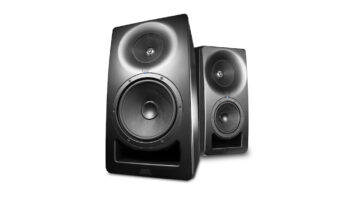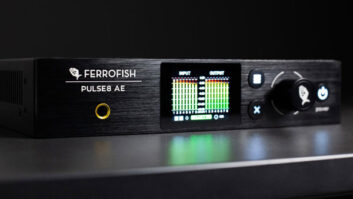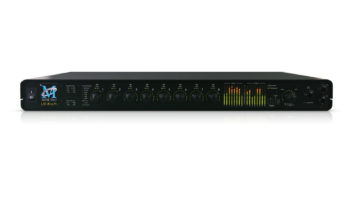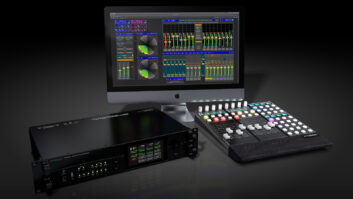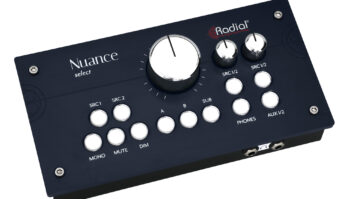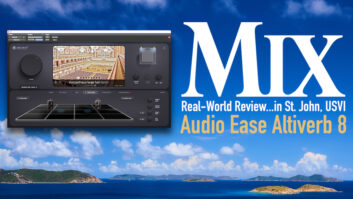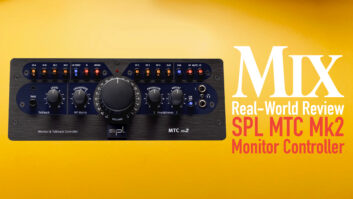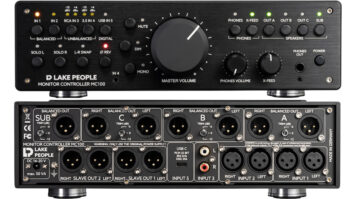

Mastering engineer John Vestman is often asked, “How do I make my mixes sound better?” The answer could easily fill a book, but Vestman’s initial reply is simple: “Listen to recordings that you like and compare them to your mix. Use them as a reference to judge your work and then adjust your mix accordingly.” While this sounds like an easy exercise, there is an inherent problem when listening to an unmastered mix vs. an EQ’d, compressed and leveled master: The mastered sound source is usually much louder. Most consoles can select multiple monitor sources, but none allow the user to quickly and easily match levels.
Vestman saw a need for a product that would allow level matching and simultaneously provide an increased sonic perspective by improving on the circuitry found in most console monitoring sections. He started Nautilus Master Technology to bring mastering techniques and technology into the recording studio environment and make products that help people improve their mixes. Enter NEMO (Nautilus Extended Monitor Options) DMC-8, a high-quality replacement for a console’s monitoring section. If you mix in a DAW, then it becomes your monitoring controller with input selection, level and speaker control.
BREAKING DOWN THE BACK PANEL
The DMC-8 has four input pairs: One monitors the stereo bus output of a console or DAW, two 2-track balanced XLR inputs accept +4dB inputs and the last accepts -10dB playback devices. The stereo input has no trim; the other monitoring sources have dedicated high-precision trim controls, allowing users to match their mix levels to other sources. These trim controls are simple attenuators, while the unbalanced -10dB input can add extra gain. The stereo bus input accepts XLR or ¼-inch inputs; two RCA connectors provide input for -10dB devices. There are switchable input pads on the -10dB input and the stereo input.
The DMC-8’s stereo outputs comprise two stereo bus outputs, a source-select output and speaker A and B outputs. The stereo bus outputs are simple pass-throughs to keep the signal path clean. The source-select output is a fully balanced line-level output that follows the button selection on the front panel. Other connections include a dim logic phono connector that allows remote dimming of the monitors when using a talkback and a socket for remote switching.
METERS AND MORE
Front panel controls include mono, dim, mute, speaker B (with dedicated trim) select switches and overall volume. Two moon-shaped meters give the unit much of its retro look and feel. Vestman chose analog RMS VU meters because he believes their ballistics relate more closely to how the ears hear. However, most modern mixes are much louder than a VU meter displaying the industry-standard 0 dB. Many custom mastering consoles can pad the meters, returning their movements to their useful range. The DMC-8 has a meter range selector switch with settings from -4 to +4. (These can be changed by adjusting pots inside the unit.)
The Class-A DMC-8, codesigned by Vestman and Inward Connections, uses all precision, high quality components, featuring the SPA690 discrete amp block designed by John Hall of early Langevin renown.
The DMC-8 is a rackmount unit, which is fine if you are working at a DAW desk where you can mount it off to the side or underneath the desk, but still within reach. When used with a large-format console, the DMC-8 is difficult to place. I prefer it on the meter bridge, right in the middle of the console, but this is not always practical. Placing it in a rack means that you will have to leave your chair to make monitor adjustments.
There is no talkback function, headphone output or solo bus. If you want talkback and solo, then you can route the console’s monitor output to a 2-track tape return input of the DMC and then use the console’s talkback and solo functions while monitoring the DMC’s 2-track return. A future solution is to use NEMO’s forthcoming optional remote, or Communicator headphone distribution unit. The remote controls volume, source select, dim, mute, talkback and a headphone jack, and can sit on top of the console or desk. Headphone outputs for cue mixes could then be derived from the DMC-8’s source-select outputs or cue sends from the console. That would feed the Communicator, which would add talkback with the source on its way to the headphones. In use, the moon-shaped meters are very comforting to look at while mixing. The large monitor control knob is large and precise, instead of small and jumpy as are some console monitor control knobs. The front-mounted trim controls make level matching a breeze.
To showcase the unit, Vestman built an A/B switching box that facilitates comparing the DMC-8 to a console’s monitor section. I compared the DMC-8 to a Euphonix CS2000 and a Digidesign ProControl. In both cases, the DMC-8 demonstrated an increased clarity, width and depth of field. My initial response was that audio through this box sounded brighter, so I checked its frequency response and found it to be ruler-flat. The DMC-8 was just showing me a more accurate picture of my mix. Using this unit to replace your monitor section is like going to the optometrist for glasses: You could see before, but now your vision is clearer.
The DMC-8 lists for $3,600 or purchased direct from Nautilus for $3,200. This is an expensive piece of gear, but you get what you pay for. If you are willing to pay that much for a recording chain (mic, preamp, EQ, etc.) to record one channel, then why not do the same for a piece of gear that affects every channel you record?
Nautilus Master Technology, 714/894-4000, www.nautiluspro.com.
Erik Zobler is an L.A.-based mixer.

Click here to see how the DMC-8 connects with a DAW, an analog recording console and a CD mastering system.
Click here to see the owner’s manual.
Click here to read Nautilus’ Super-Effective A/B Techniques.
